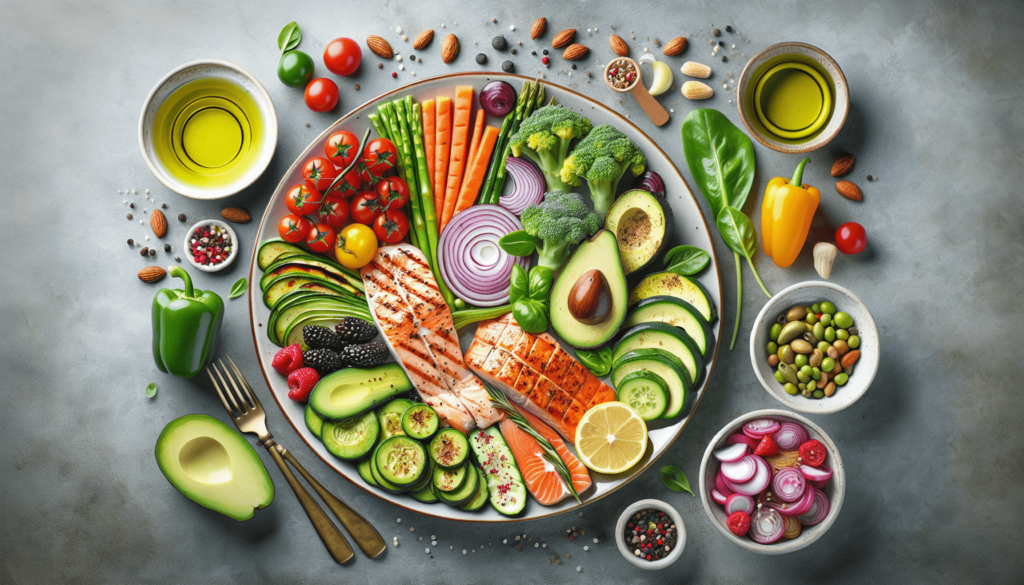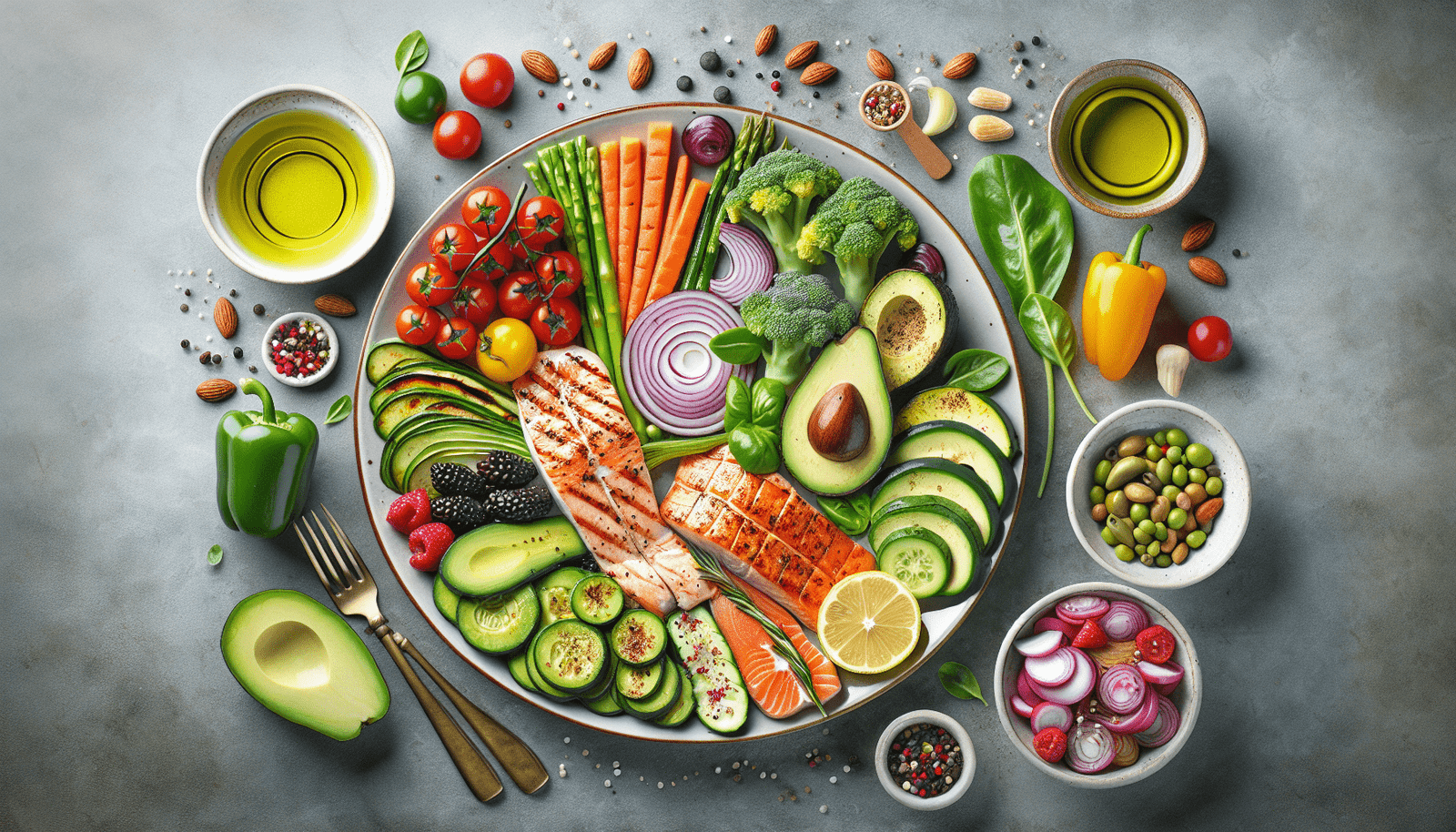Are you looking to personalize your Keto meal plan to achieve specific goals? Look no further! In this article, we will explore the art of customizing your Keto meal plan to suit your individual goals, whether it’s weight loss, muscle gain, or overall health improvement. With a few simple adjustments and a touch of creativity, you’ll be able to tailor your meal plan to meet your desired outcomes while still enjoying the delicious benefits of a Keto diet. Get ready to embark on a journey of customization and discover how to optimize your Keto meal plan for success!
Understanding Your Specific Goals
Identify your specific health and fitness goals
When customizing your Keto meal plan, it’s essential to first identify your specific health and fitness goals. Are you looking to lose weight, build muscle, improve athletic performance, or simply maintain a healthy lifestyle? By clearly defining your goals, you can tailor your meal plan to meet your individual needs.
Consider the timeframe for achieving your goals
Once you’ve identified your goals, it’s important to consider the timeframe you have in mind for achieving them. Are you looking for long-term sustainable results, or do you have a specific deadline in mind? This will help you determine the pace at which you need to progress and make adjustments to your Keto meal plan.
Evaluate your current dietary habits and lifestyle
To customize your Keto meal plan effectively, it’s crucial to evaluate your current dietary habits and lifestyle. Take note of the types of foods you typically consume, as well as any dietary restrictions or allergies you may have. Additionally, consider your daily routine, activity level, and overall lifestyle factors that may impact your ability to adhere to a specific meal plan.
Determining Macronutrient Needs
Learn the basics of macronutrients on a Keto diet
Before customizing your Keto meal plan, it’s important to understand the basics of macronutrients. On a Keto diet, the primary macronutrients to focus on are fat, protein, and carbohydrates. Unlike traditional diets that emphasize low-fat and high-carbohydrate intake, Keto relies on a high-fat, moderate-protein, and low-carbohydrate approach to achieve ketosis.
Calculate your ideal macronutrient ratios
To determine your ideal macronutrient ratios on a Keto diet, you can use a macronutrient calculator or consult with a registered dietitian. These ratios typically involve consuming around 70-75% of calories from fat, 20-25% from protein, and only 5-10% from carbohydrates. Customizing your Keto meal plan based on these ratios will help guide your food choices and ensure you stay in ketosis.
Adjust macronutrient intake based on goals (e.g., weight loss, muscle gain)
Depending on your specific goals, you may need to make adjustments to your macronutrient intake. For example, if weight loss is your goal, you may choose to increase your fat intake and decrease your protein intake slightly. On the other hand, if muscle gain is your objective, you may opt for a slightly higher protein intake. These adjustments can be made while still staying within your overall macronutrient ratios.

Customizing Calorie Intake
Determine your daily calorie requirements
In addition to macronutrient ratios, you should also consider your daily caloric requirements when customizing your Keto meal plan. This can be determined by considering factors such as your age, sex, height, weight, and activity level. Online calculators or consulting with a healthcare professional can help you estimate the number of calories you need to achieve your goals.
Modify calorie intake according to your goals
Once you have determined your daily caloric requirements, you can modify your calorie intake based on your specific goals. If weight loss is your aim, you may choose to create a calorie deficit by consuming fewer calories than you burn. On the other hand, if muscle gain is your focus, you may need to consume a calorie surplus to support muscle growth. Adapting your calorie intake is key to achieving your desired outcomes.
Consider factors like activity level and metabolic rate
When customizing your Keto meal plan, it’s important to take into account factors like your activity level and metabolic rate. If you have a highly active lifestyle or a faster metabolic rate, you may require more calories to fuel your body. Adjusting your calorie intake based on these factors will ensure that you have enough energy and nutrients to support your goals and overall well-being.
Adapting Carbohydrate Intake
Set a target range for daily carbohydrate consumption
On a Keto diet, limiting carbohydrate intake is crucial for achieving and maintaining ketosis. You can start by setting a target range for your daily carbohydrate consumption. Most individuals aiming for ketosis typically consume between 20-50 grams of carbohydrates per day. However, it’s important to experiment and find the level that works best for your body and supports your goals.
Adjust carbohydrates based on individual needs and goals
While there are general guidelines for carbohydrate intake on a Keto diet, it’s essential to adjust your carbohydrates based on your individual needs and goals. If you find that you have more energy and better performance with slightly higher carbohydrate intake, you may choose to consume towards the higher end of the recommended range. However, if you find that you achieve better ketosis with lower carbohydrate intake, you may opt for a more strict approach.
Experiment with carb cycling or targeted Keto for specific outcomes
For individuals looking to optimize their Keto meal plan for specific outcomes, experimenting with carb cycling or targeted Keto approaches can be beneficial. Carb cycling involves alternating between higher and lower carbohydrate days, which can be useful for athletes or those with specific performance goals. Targeted Keto involves consuming a small amount of carbohydrates around workouts to enhance performance and recovery.

Optimizing Protein Intake
Establish the appropriate protein intake for your goals
Protein plays a crucial role in muscle growth, repair, and overall health. When customizing your Keto meal plan, it’s important to establish the appropriate protein intake for your goals. This can vary depending on factors such as your weight, activity level, and muscle-building objectives. Generally, a moderate protein intake of around 0.6-1 gram per pound of body weight is recommended on a Keto diet.
Prioritize high-quality sources of protein
To optimize your protein intake, it’s essential to prioritize high-quality sources of protein. This includes foods like lean meats, poultry, fish, eggs, dairy products, and plant-based sources such as tofu and legumes. Choosing protein sources that are rich in essential amino acids will ensure that your body is getting the necessary building blocks for muscle growth and repair.
Consider protein timing and distribution throughout the day
In addition to the amount and quality of protein, it’s also important to consider protein timing and distribution throughout the day. Aim to spread your protein intake evenly across your meals to maximize muscle protein synthesis. Additionally, consuming protein-rich foods before and after workouts can help enhance muscle recovery and promote optimal results.
Incorporating Healthy Fats
Understand the importance of dietary fat on Keto
Dietary fat is a crucial component of a Keto meal plan as it provides energy, supports hormone production, and helps maintain satiety. Understanding the importance of dietary fat on a Keto diet is key to customizing your meal plan successfully. Focus on incorporating healthy fats such as avocados, nuts and seeds, olive oil, coconut oil, and fatty fish into your meals for optimal nutrition and satisfaction.
Choose healthy sources of fats
When selecting fats for your Keto meal plan, it’s important to choose healthy sources that provide a good balance of essential fatty acids. Avoid highly processed and hydrogenated fats, as they can be detrimental to your health. Instead, opt for natural sources of fats that are rich in monounsaturated and polyunsaturated fats, as these have been associated with numerous health benefits.
Adjust fat intake to support your goals
To customize your Keto meal plan for your specific goals, you may need to adjust your fat intake accordingly. If your objective is weight loss, you may opt for a higher fat intake to increase satiety and promote fat burning. Conversely, if muscle gain or performance is your focus, you may choose to moderate your fat intake slightly to allow for higher protein and carbohydrate consumption.
Fine-Tuning Micronutrient Intake
Ensure sufficient intake of essential vitamins and minerals
While macronutrients are crucial, it’s equally important to ensure sufficient intake of essential vitamins and minerals when customizing your Keto meal plan. Aim for a diverse range of nutrient-dense foods such as leafy greens, cruciferous vegetables, berries, nuts, and seeds to meet your micronutrient needs. Consider incorporating a variety of colors into your meals to ensure a wide spectrum of nutrients.
Consider supplements for specific nutrient needs
In some cases, it may be necessary to consider supplements to meet your specific nutrient needs. Depending on individual factors such as dietary restrictions or deficiencies, you may require additional supplementation. Consult with a healthcare professional or registered dietitian to determine if any specific supplements are necessary for your goals.
Track nutrient intake through food logging or apps
To ensure you’re meeting your micronutrient needs, consider tracking your nutrient intake through food logging or apps. These tools can help you monitor your macronutrient and micronutrient intake, providing valuable insights into your overall nutrition. By consistently tracking your food intake, you can make adjustments to your Keto meal plan and ensure you’re on track to reach your goals.
Managing Meal Frequency and Timing
Explore different meal frequency approaches (e.g., intermittent fasting)
Meal frequency and timing can play a role in customizing your Keto meal plan to suit your preferences and lifestyle. Exploring different meal frequency approaches, such as intermittent fasting, can be beneficial. Intermittent fasting involves cycling between periods of eating and fasting, which may offer benefits such as improved insulin sensitivity and fat burning.
Adjust meal timing to optimize energy levels and performance
In addition to exploring different meal frequency approaches, adjusting meal timing can help optimize your energy levels and performance. Some individuals find that consuming larger meals earlier in the day provides sustained energy and improved mental clarity, while others prefer smaller, more frequent meals throughout the day. Experiment with different meal timing options to find what works best for you.
Consider individual preferences and lifestyle factors
When customizing your Keto meal plan, it’s important to consider your individual preferences and lifestyle factors. Some individuals may thrive on three square meals a day, while others prefer grazing throughout the day. Consider your work schedule, social commitments, and personal preferences to create a meal plan that is not only effective for your goals but also enjoyable and sustainable in the long term.
Personalizing Recipe Selection
Identify Keto-friendly recipes aligned with your goals
To ensure you stay motivated and enjoy your Keto journey, it’s important to personalize your recipe selection. Identify Keto-friendly recipes that align with your goals and taste preferences. Whether you’re looking for simple and quick meals or gourmet options, the abundance of Keto recipe resources available online can help you find delicious meals that support your specific goals.
Modify recipes to suit taste preferences and dietary restrictions
Once you’ve identified Keto-friendly recipes, feel free to modify them to suit your taste preferences and dietary restrictions. Don’t be afraid to swap ingredients, adjust seasoning, or experiment with different cooking methods. By customizing recipes to your liking, you’ll increase your enjoyment of the Keto diet and increase your chances of sustaining it long term.
Experiment with meal prepping and batch cooking
To make your Keto meal planning and preparation more efficient, consider experimenting with meal prepping and batch cooking. Set aside some time each week to plan and prepare your meals in advance. This can help save time, reduce decision fatigue, and ensure that you always have healthy Keto-approved options readily available. By incorporating meal prepping into your routine, you’ll set yourself up for success.
Monitoring Progress and Adjusting
Track your progress towards your goals (weight, body composition)
Tracking your progress toward your goals is essential to ensure your Keto meal plan is effective. Regularly monitor metrics such as weight, body composition, and measurements to gauge your progress. Keep in mind that progress may not always be reflected on the scale. Pay attention to how your clothes fit, how you feel, and any improvements in energy levels or overall well-being.
Monitor energy levels, satiety, and overall well-being
In addition to tracking physical changes, it’s equally important to monitor your energy levels, satiety, and overall well-being. Pay attention to how you feel after meals, whether you experience sustained energy throughout the day, and if you feel satisfied and nourished. These indicators can help you fine-tune your Keto meal plan and make adjustments as needed.
Make adjustments to your Keto meal plan as needed
Finally, be prepared to make adjustments to your Keto meal plan as needed. Your goals may evolve over time, and what worked initially may not yield the same results as you progress. Don’t be afraid to experiment, seek guidance from a registered dietitian or healthcare professional, and explore new strategies to keep your Keto journey exciting and effective. By staying adaptable and continuously optimizing your meal plan, you’ll be well on your way to achieving your specific goals.

